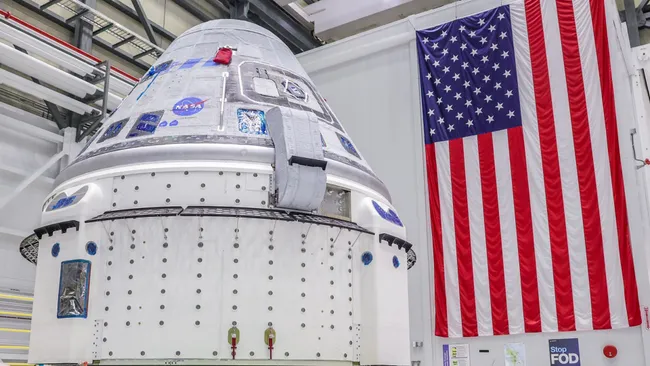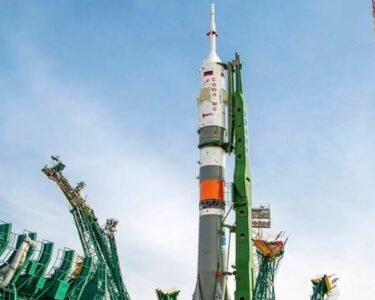Introduction: A New Era in Spaceflight
The human desire to explore the cosmos continues to propel innovation. Boeing Starliner, a partially reusable spacecraft, stands as a testament to this ongoing pursuit. Designed to ferry astronauts to the International Space Station (ISS) and other low-Earth orbit destinations, Starliner represents a significant milestone in American travel space. This article delves into the latest information surrounding the Starliner, exploring its design, functionalities, development journey, and upcoming missions.
Will NASA use Starliner?
Boeing Starliner development owes much to NASA’s Commercial Crew Program (CCP). Established in 2010, the CCP aimed to revitalize American human spaceflight capabilities by fostering partnerships with private companies. Boeing, a renowned aerospace giant, emerged as a key partner, bringing its rich history in aviation and spacecraft design to the table. The CCP not only fostered competition but also leveraged the expertise of the private sector, leading to advancements that might not have been possible under a solely government-run program.

(Image credit: Boeing/John Grant)
Boeing Starliner Design: A Blend of Innovation and Legacy
The Boeing Starliner spacecraft is a marvel of modern engineering. Envisioned for up to seven passengers, it offers a flexible configuration that can accommodate crew, cargo, or a mix of both. For missions to the ISS, Starliner will typically transport four astronauts and essential scientific research. This crew capacity aligns with the typical size of space station expeditions, ensuring efficient utilization of space and resources.
One of Boeing Starliner’s defining features is its weldless structure. This innovative approach utilizes advanced bonding techniques, leading to a lighter and more robust capsule. The absence of welds translates to fewer potential weak points, enhancing overall structural integrity. The design prioritizes crew safety, incorporating a pusher escape system that can propel the capsule away from the launch vehicle in case of emergencies during ascent. This system provides an additional layer of protection during the critical launch phase.
Is Boeing Starliner reusable?
The crew capsule is designed for up to 10 flights, with a turnaround time of approximately six months. This reusability aspect contributes to mission cost-effectiveness. By utilizing the capsule for multiple missions, the program can significantly reduce overall operational expenses. In contrast, the service module, which provides propulsion and power, is expendable and discarded after each mission. The service module houses the engines and fuel necessary for orbital maneuvers and deorbiting for re-entry.
Boeing Starliner Interior: Prioritizing Crew Comfort and Functionality
Boeing Starliner interior prioritizes crew comfort and functionality. The capsule features a spacious environment with advanced environmental control systems to ensure a breathable and comfortable atmosphere. The cabin size allows astronauts adequate room to move around and perform their duties efficiently. The control panel utilizes modern touchscreen interfaces, allowing astronauts to efficiently monitor and manage various spacecraft systems. These interfaces are designed to be intuitive and user-friendly, minimizing the cognitive load on the crew during critical mission phases. For extended missions, Boeing Starliner boasts amenities like a dedicated galley and a waste management system. The galley provides a space for astronauts to prepare and consume meals, while the waste management system ensures a hygienic environment during extended space travel.
Starliner’s Maiden Voyage: Challenges and Triumphs
Boeing Starliner inaugural uncrewed test flight in December 2019 encountered software glitches that prevented it from docking with the ISS. However, the capsule successfully re-entered Earth’s atmosphere and landed in New Mexico. This setback, though significant, provided valuable data that allowed Boeing engineers to address the software issues. The ability to successfully re-enter and land despite the software problems demonstrated the robustness of the capsule’s design and the effectiveness of its heat shield and guidance systems.
Boeing Starliner Returns: A Successful Second Attempt
The second uncrewed test flight, christened Orbital Flight Test 2 (OFT-2), May 2022. This mission proved to be a resounding success launched in. Boeing Starliner successfully docked with the ISS, demonstrating its ability to perform critical maneuvers and fulfill its intended role. This victory marked a crucial turning point for the program, restoring confidence and paving the way for crewed missions. The successful docking with the ISS validated the design and operational procedures, proving Boeing Starliner’s capability to safely deliver astronauts to the space station.
The Road Ahead: A Future Filled with Possibilities
With a successful uncrewed test flight under its belt, Boeing Starliner is poised to embark on its most significant mission yet: the Crew Flight Test (CFT). Targeted for early May 20, 2024, this mission will carry veteran astronauts Butch Wilmore and Suni Williams on a critical test flight to the ISS. A successful CFT will pave the way for Starliner to become a certified vehicle for regular crew rotation missions to the space station. This signifies a return of American crewed launches to the ISS, following a period of reliance on Russian Soyuz spacecraft.
Beyond the ISS: A Gateway to New Frontiers
While the ISS remains a focal point for Boeing Starliner initial operations, its capabilities extend beyond low-Earth orbit destinations. The spacecraft’s design flexibility and reusability make it a compelling option for future missions to the Moon as part of NASA’s Artemis program. Starliner’s potential role in lunar missions could involve transporting astronauts to a lunar Gateway space station or even directly to the lunar surface with future modifications.
The Potential for Space Tourism: A New Era of Exploration
Starliner’s design also holds promise for the burgeoning space tourism industry. Its spacious cabin and advanced life support systems could provide a comfortable environment for private citizens to experience the wonders of spaceflight. Boeing has expressed interest in partnering with private companies to offer such experiences, potentially opening space travel to a wider audience. This would mark a significant step towards democratizing space exploration and fostering a new era of commercial space travel ventures.
Challenges and Considerations
As with any complex technological endeavor Boeing Starliner development has encountered challenges. The aforementioned software issues during the first uncrewed test flight highlight the importance of rigorous testing and meticulous attention to detail. Additionally, the reusability aspect, while offering cost advantages, presents its own set of challenges, such as the need for thorough inspections and refurbishments between missions.
Looking Forward: A Catalyst for Innovation
Despite these challenges, Boeing Starliner represents a significant leap forward in American spaceflight capabilities. The program has spurred innovation in spacecraft design, propulsion systems, and human-machine interfaces. The public-private partnership model adopted by the CCP serves as a potential blueprint for future space exploration endeavors, fostering collaboration and leveraging the expertise of both government agencies and private companies.
Conclusion: A Symbol of Human Ingenuity and the Promise of Tomorrow
The Boeing Starliner embodies the spirit of human exploration and ingenuity. This pioneering capsule stands poised to usher in a new era of space travel, facilitating safe and efficient astronaut transportation to low-Earth orbit destinations and beyond. As Beyond Starliner embarks on its crewed missions and potentially ventures further into the cosmos, it serves as a powerful symbol of humanity’s unwavering pursuit of knowledge and exploration in the vast expanse of space.





